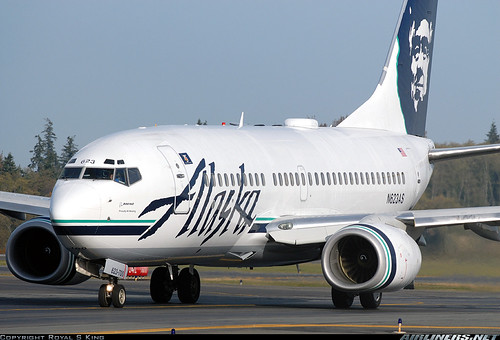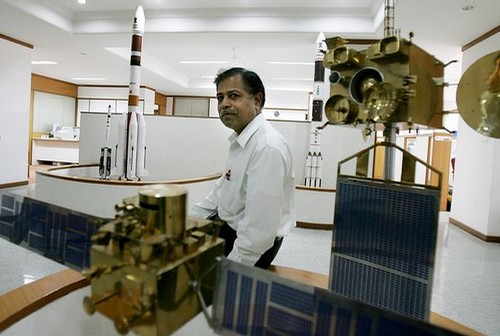The Situation:
Background –
In the satellite industry there have been some rather spectacular satellite failures, as well as significant in orbit anomalies, that have seriously affected missions and caused many insurance claims over the last 10 to 15 years. This has generally been due to design or test oversights and errors discovered very late in a program, or not at all, ending up in orbit.
As Mr. Keith Vokert (CEO, Satellite Consulting, Inc.) has pointed out in a great paper on this topic titled “THE NEED FOR ONE MORE LOOK or WHEN WHITE HAIR IS A GOOD THING”, the causes of the problem are generally as follows:
· No single cause but often a combination of factors
· Relying on process
· Schedule pressures
· Fewer senior experts on staff
· Less time for reviews
· Limited number of independent reviewers
· Much smaller customer teams
· ITAR has reduced content
· Financial pressures
Mr. Volkert goes on to analyze the situation in much greater detail and strongly suggests that the pool of retired engineers, readily available as consultants, should be utilized “to provide at least one last look through a more experienced set of eyes.”
You can find this August 28, 2007 paper at the following link:
www.aerowebspace.com/aiaa/archives/volkert.ppt
I totally agree with Mr. Volkert’s assessment and also the use of the words “at least”. This is because, for companies without sufficient senior staff or who may not have their own customer team, the use of these readily available experienced senior consultants throughout the course of a satellite program provide an invaluable substitute, or supplement, to any direct staff deficiencies.
Experience versus Process –
Although most aerospace companies would indicate that they understand and appreciate the value of the experience senior technical personnel (i.e., those with 20, 30, or more years of experience) bring to the table to help insure the technical quality of the spacecraft produced, history does not necessarily support this. Senior professionals are often the first to be laid off in tough economic times, industry consolidation, and/or company reorganizations. In addition, there has also been a natural loss of experienced people overall due to the retirement of these older individuals who started when the aerospace industry was in its early stages (i.e., primarily in the 60’s and 70’s) and the fact that the number of young people entering the aerospace industry since that time has declined, favoring computers, software and other fields. The loss of senior professionals leaves the younger less experienced engineers to fill the void and as it used to be said to “re-learn the wheel”. Essentially, these younger engineers end up having to learn from their own experience what their senior counterparts could have advised them about from their past experience, had they still been available to them. This loss of resident experience often means repeating past problems and mistakes over again as well as ineffectively handling new ones. To compound this problem further, some of these same companies have eliminated the use of consultants who could have compensated for the loss of resident experience and also help mentor and advise its younger engineers. Essentially these consultants, many of whom retired after over 30+ years of experience in the industry, working in conjunction with their younger counterparts, could be a good solution if utilized, to maintain the necessary technical quality for mission success.
The bottom line is that aerospace companies as a whole often have less experience on their staffs than they once had and some of these companies also have a tendency against using consultants that might supplant this loss of experience.
The main reason these companies usually give for reducing their more senior staff and eliminating the use of consultants is that they have to operate leaner. Operating leaner generally means reducing your higher paid senior staff and perceived expensive consultants. Also management often tends to believe that they can maintain the quality of the product and avoid problems just by improving the processes. Basically management sometimes tends to believe that the senior experience is less critical to quality than a better management plan. I have seen companies unsuccessfully try to apply six sigma techniques in an attempt to improve satellite quality, replace successful program management methods with poorer ones, stay with failing processes too long before fixing them, badly fix other processes before first proving them out, and even reduce technical team size reasoning that process improvements trump team size. Oftentimes the managers in charge have not come up through the spacecraft technical ranks and therefore don’t always appreciate what is necessary for quality and mission success. This lack of appreciation frequently leads these managers to reduce costs without any thought to the impact it might have to the end result.
Misconception Related to Consultant Usage –
Speaking of costs, there is often a misconception that using consultants is more expensive to a company than hiring someone full-time. In a recent article in Kiplinger’s Personal Finance Magazine (Sept., 2009 Edition, Page 80) on Consulting it states the following advantage of being a consultant:
“As for drumming up business, you may have an edge in the current economy. Companies are looking to hire consultants because they are cheaper that full-time workers.”
While it’s true that consultants generally demand a higher hourly rate, it is also true that consultants are less costly for a number of other good reasons as highlighted in the following advantages. Specifically advantages number 3, 4 and 5 save the company considerable expense relative to direct employees. To be fair there are also disadvantages shown in using consultants. However, as far as these disadvantages are concerned, as shown in red they are often not really significant or can easily be overcome.
Advantages and Disadvantages of Using Consultants vs Direct Employees
• Advantages –
1. Consultants provide a valuable service to the company by bolstering company teams with experienced and knowledgeable people to help insure the program requirements are met and that the quality of the satellites are as good as they can be.
2. Can provide expertise that a customer may not have in its current employee staff.
3. Consultants need no training (i.e., can hit the ground running).
4. From the companies perspective consultants are flexible and can be hired and let go as needed.
5. Consultants provide the company with significant financial benefits. The company does not take on the overhead and benefits obligation of a direct hire such as health & insurance benefits, vacation, family relocation & associated compensation, potential cultural adjustments, and/or other considerations.
• Disadvantages –
1. When consultants leave long term assignments (e.g., as residents at spacecraft manufacturers or subcontractors), they walk away with a good amount of knowledge gained that is not written down or passed on to their company colleagues. Even though they provide weekly reports, it is inevitable that not all daily information learned gets disseminated. This means that the company may have less in-house knowledge than it would ordinarily have if its own people were located at the manufacturer facilities. This can be an important deficit if anomalies occur and have to be resolved over the life of a particular satellite (i.e. the availability of all historical documentation and knowledge is critical to the successful resolution of on-orbit anomalies). On the other hand the company can write consultant contracts to assure all information collected during the course of the program (paper and soft copy) is handed over by the consultant to the company as their property.
2. Because consultants can be hired and let go at a moments notice, they may not share the same feeling of ownership in the satellite or program like their direct employee counterparts. On the other hand, consultants being retired work primarily for the love of the industry making them generally focused totally on the job at hand and independent in their thinking and analysis (i.e., not being direct employees they have no political allegiances and no pre-determined biases that can often negatively affect the independence and attitude of direct employees).
Conclusions:
So with the above in mind, the following conclusions are made:
1. Senior technical professionals with their past experience and knowledge are still a critical component to assure spacecraft quality and mission success.
2. Retired technical professionals are a cost effective way to supplement a company’s staff with critical expertise.
3. Processes can be improved, but are not a substitute for the application of senior technical expertise and experience.
Let us know what you think! We welcome your comments, opinions and thoughts on this important topic.
Consultant Service Question for Prospective Clients:
Would there be an interest by prospective clients (i.e., Spacecraft Buyers, Operators, Manufacturers or any others interested in this posting) in a spacecraft related training or mentoring course for your younger technical staff members and/or managers? One possible series could be from DAEMAR Principal Consultant Robert Youngblood, a recognized expert in spacecraft/mission operations, who previously developed a series of seminars that cover the various aspects of spacecraft fleet maintenance and operation as well as the examination of fundamental principles and real-world decisions.
While DAEMAR does not currently advertise this service, let us know if there would be an interest in this kind of course or seminar series as a consulting service?
Best Regards,
Mark Halverson
CEO, DAEMAR Consulting and Enterprise Group LLC





